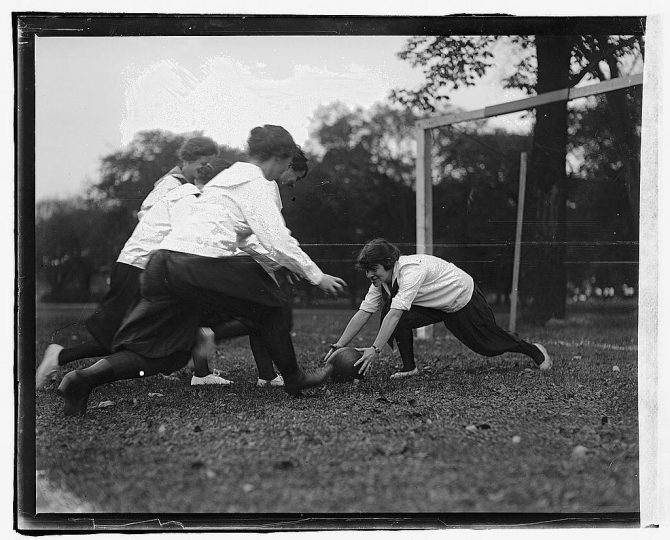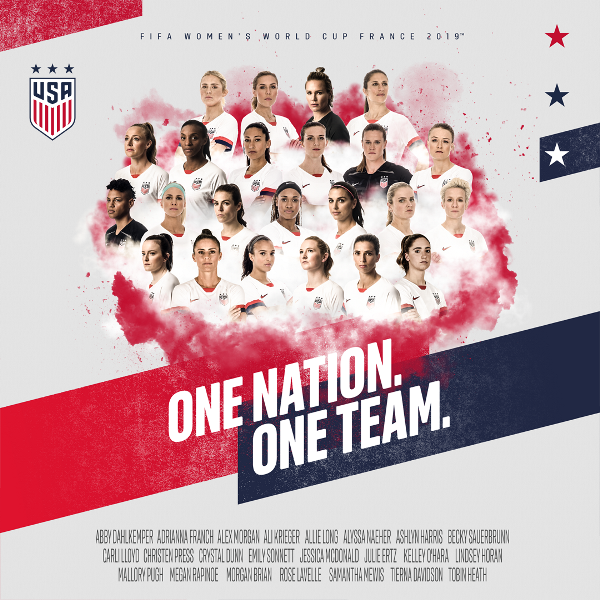On Sunday, July 7, the U.S. Women's soccer team won the World Cup game by beating the Netherlands 2-0. The inaugural world cup tournament was played in 1930. However, the first international women's tournament didn't take place until forty years later. The women's competitions were held sporadically until 1991. Women's teams have competed in the Women's World Cup every four years since then.
What sparked the beginnings of a regular women's tournament in the 1970's? The short answer for the U.S. is the passage of Title IX in 1972. Title IX prevented schools and universities from denying participation and equality in sports and other aspects of school on the basis of sex. This opened doors to teams and scholarships for women college athletes. After twenty years of building collegiate and professional sports teams, the U.S. women's soccer team transformed into a formidable international competitor. The American women's soccer team won its first championship title in 1999 at the third World Cup.
In addition to building participation in the sport of soccer and their teams for their home countries, women's soccer teams across the globe work hard to build viewership. In the brief 28 years of its existence, attendance to Women's World Cup games has more than doubled. Here in the U.S., the 2015 Women's World Cup Final was the most watched soccer match in American history with nearly 23 million viewers (1) and this year's viewership may top that number.
Part of the rise in women's soccer fans in the U.S. is due to our team's enormous achievements. Of the seven tournaments the U.S. women's team has played, they have earned four championship titles including this year's title. They've also secured four Olympic gold medals in their highly successful international history as a team. Off the pitch, the US women's team continues with less success to advocate for full equity with their men's team counterparts.
In March, members of the U.S. women’s soccer team filed a gender discrimination lawsuit against the U.S. Soccer Federation. Shortly before this year's tournament began, the two parties agreed to mediation (2). Though the passage of Title IX opened may new opportunities to women athletes, these players allege that equal pay, parity in game location, and quality of medical treatment have not kept up with their male soccer counterparts. For this reason, supportive fans cheered "Equal Pay!" from the World Cup stands when the team won their final match this Sunday (3). The outcome of the upcoming discussions could help women's soccer continue to thrive in the years to come.
Want to learn more about the World Cup, professional women athletes, or the fight for gender equity in women's sports? Here are a few titles to help you get started:
Under the Lights and in the Dark
Ask a librarian for more ideas for learning about women's sports and the powerful women athletes of the U.S. women's soccer team!
Citations
(1) “Women's World Cup Final Is Most-Watched Soccer Match in U.S. History.” USSoccer.com, U.S. Soccer Federation, 8 July 2015, www.ussoccer.com/stories/2015/07/womens-world-cup-final-is-mostwatched-soccer-match-in-us-history.
(2) Baxter, Kevin. “U.S. Soccer and USWNT Players Agree to Mediation over Pay Dispute.” LATimes.com, Los Angeles Times, 22 June 2019, www.latimes.com/sports/soccer/la-sp-us-soccer-uswnt-pay-dispute-mediation-20190622-story.html.
(3) Sacks, Brianna. "The World Cup Crowd Started Chanting 'Equal Pay' Right After The US Women Won." BuzzFeed News. 7 July, 2019, https://www.buzzfeednews.com/article/briannasacks/womens-world-cup-equal-pay-reaction.





Add a comment to: The Story of the Women’s World Cup